A plant such as Gazania is also called African chamomile or gazania. It is directly related to the aster family. This genus includes about 40 different species. In natural conditions, they can be found in South Africa and Mozambique, and also in the coastal dunes of Australia. In European countries, they learned about this flower in the 17th century, at that time it acquired its current name in honor of the Italian Theodor von Gaza, who was a priest who translated the works of Theophrastus and Aristotle. In Western Europe, such flowers are also called "midday gold". The fact is that flowers with a warm color bloom at noon.
Content
Features of gatsania
Gatsania can be either an annual or a perennial plant. The height of the bush is about 30 centimeters. Basal leaf plates are part of the rosette, while the stem is completely absent or it is very short. Dense leaf plates can be greenish-gray or dark green and have a wide variety of shapes. On the seamy surface of the leaves are thick silvery villi, they protect the flower from cold weather, and during drought they help to retain water. Inflorescences look like single baskets, which can reach 5-9 centimeters in diameter. They include reed flowers, which can be red, orange or yellow in color. They have a dark spot at the base, resulting in a circular pattern around the middle, painted yellow. The center includes tubular flowers. There can be about 35 of these inflorescences on one bush. The fruit is a hairy achene with a tuft.
Growing gatsania from seeds
Sowing seedlings
The sowing time of a given plant for seedlings directly depends on the area with what climate the gardener lives. In the event that a cold and late spring is observed, then excessively early sowing of seeds will require additional lighting of seedlings. Without additional lighting, the plant will grow and develop much more slowly due to lack of light. Sowing seeds, for example, in May will lead to the fact that you can admire the flowering of gatsania relatively later.In this regard, it is recommended to sow seeds in the second half of March, and preferably in mid-April. For seeding, high containers are used, this is necessary so that the rod long root does not bend during the growth process. The soil mixture for sowing must be taken well-drained, light with a pH of 5.5 to 6.5. Seeding should be done sparsely. You can simply distribute the seeds over the surface of the substrate in a checkerboard pattern, while the distance between them should be from 2 to 3 centimeters. A thin layer of substrate can be poured over the seeds, or they can also simply be pressed a little into the soil. Moisten crops from a sprayer and cover the container with foil or glass. Then it is removed to a well-lit, sufficiently warm (from 18 to 20 degrees) place. Remember that you need to remove condensation from the shelter and arrange ventilation every day. The first seedlings will appear after 7-15 days.
Seedling
If seedlings are grown in a deep container, then in this case she will not need a pick. In other cases, after the fourth true leaf is formed on the plant, it will need to be planted in a peat-melting pot. Then the seedlings are removed for growing in a place where it is somewhat cooler (from 12 to 16 degrees), while a loggia, which is insulated, but not heated, will be an excellent option. From this point on, you should start hardening the plants. To do this, it is necessary every day for some time during the day to open the window, while protecting the gats from drafts.
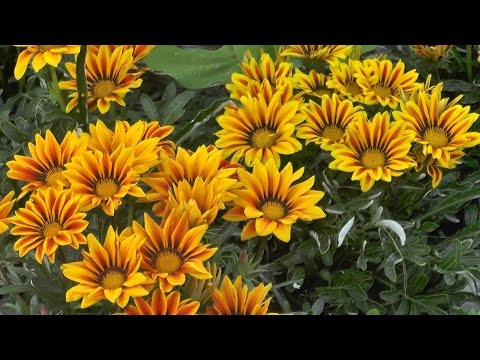

Watch this video on YouTube
Landing in open ground
What time to plant
Seedlings of this plant should be started from the second half of May to the first days of June. After disembarking, looking after gatsania will become much easier. However, before planting the plants, you need to find the most suitable place. An open, well-lit area is suitable for this. Garden soil should be light and nutrient-dense. Remember that this plant needs direct sunlight and is not harmed by direct sunlight. The fact is that it is very fond of light and has a high drought resistance.
How to plant
It is necessary to plant seedlings in open soil in those peat-baked pots in which they grew. In the event that the cultivation was carried out in a deep box, then in order to take out the long root of the plant without injury, you need a long enough scoop. When transferring the flower to the hole, try not to injure the root in the same way. A distance of at least 20 centimeters should be left between the bushes. Gatsania bloom begins very soon after planting in the garden. So, the flowering of this plant is observed only 3 months after sowing the seeds.
Care features
In order for gatsania to grow well and please with its appearance, it is necessary to choose the right place for planting, namely: sunny and with well-drained soil. This flower is quite thermophilic, but it tolerates frosts up to minus 5-7 degrees. This flower needs moderate watering. After this procedure has been carried out, you need to loosen the surface of the soil and at the same time remove all weeds. In order for flowering to be more abundant and duty, it is simply necessary to remove in time those inflorescences-baskets that have begun to wither. It will be good if you mulch the surface of the soil. This will help to significantly reduce the number of waterings as well as weeding. For normal development, such flowers need timely feeding. In the event that you planted gatsania in soil saturated with nutrients, then it will need to be fertilized 1 time in 4-6 weeks, for this use a complete mineral fertilizer (for 1 m2 take from 20 to 25 grams of the substance). If the plants were planted in poor rocky soil, then fertilizing will have to be done once every 15-30 days.
Bloom
The flowering of such a plant is observed in June – October.After opening, each inflorescence-basket withers only after 20 days. When it's dark or cloudy outside, the reed flowers curl up, while they cover the yellow core, consisting of tubular flowers. In some cases, growers may complain that the plant does not bloom. The most common reasons for this phenomenon are: little light, excessive watering, or late planting of seedlings in open soil. If everything is done correctly and on time, then the flowering will be long, lush and spectacular.
Diseases and pests
The one who has grown such a flower knows that it is not susceptible to disease. However, in the event that gatsania is grown under conditions that are not suitable for it, then it weakens, and it may well be affected by gray rot. In this case, the affected bushes should be dug up and destroyed, and the remaining ones should be sprayed with a phytosporin solution.
Aphids, snails and spider mites are dangerous pests for the plant. The snails are removed from the bushes by hand picking. To cope with a spider mite, they use: actellik, ditox or fufanon, and to kill aphids, they use: acarin, fitoverm, inta-vir.
Gatsania after flowering
Seed collection
In middle latitudes, the seeds of such a plant most often do not ripen. This can only happen if the summer period is relatively dry, sultry and long. It should also be remembered that, as a rule, hybrid varieties of such a plant are cultivated, and their seeds do not have the ability to preserve the varietal characteristics of the parent plant. And we must also remember that the ripe inflorescences of gatsania are very similar to dandelion, with a strong gust of wind, the seeds simply fly away. In this regard, the fading baskets must be wrapped with gauze, which is fixed on the peduncle, so that the seeds remain in place.
Wintering
If you are cultivating an annual plant, then when it has faded, the residues are removed and burned. However, some gardeners keep it for the next year. Choose the most spectacular bushes that still need to bloom. They are dug up and planted in containers or pots. After that, they are placed in a cool (8 to 10 degrees) room with good lighting. Watering should be rare and abundant, but the earthen coma should not be allowed to completely dry out. In spring, they are planted in the garden, while their stems should be shortened by ½ part.
The main types and varieties of gatsania with photos and names
Gatsania long-rifle (Gazania longiscapa)
This annual plant can reach a height of 15 to 20 centimeters. The entire basal leaf plates are slightly cut, on the front side they are rich green, and on the seamy surface there is pubescence. The diameter of the inflorescence is about 7 centimeters, while both types of flowers have a deep yellow color. The bases of the reed flowers are brownish in color.
Gatsania harsh, or shiny (Gazania rigens, Gazania splendens)
The bush reaches a height of about 30 centimeters. The diameter of the inflorescences varies from 4.5 to 6 centimeters. The color of the tubular flowers is blood-black. Reed flowers can be colored red, deep yellow or orange, while at the base there are specks of brown, black or white. As a rule, leaf plates are solid, but pinnately-divided ones are also found.
Gazania pottsii
This plant is similar to gatsania harsh, only it is larger. The diameter of the inflorescence is about 12 centimeters.
Gazania peacock (Gazania pavonia)
Among other species, it stands out in the form of leaf plates, so they are narrow and long (about 20 centimeters). The diameter of the inflorescence is about 8 centimeters. The reed flowers have an orange-yellow color and a black base, the tubular flowers are yellow.
Gatsania pinnata (Gazania pinnata), snow-white gatsania (Gazania nivea), single-flowered gatsania (Gazania unifiora) and hybrid gatsania (Gazania x hybrida), which were obtained as a result of crossing various species, are also cultivated, but mostly long-arrow and harsh gatsania. Currently, varieties have been obtained that can bloom in cloudy weather. Most popular hybrid varieties:
- Daybreak Red Stripe. Baskets are pale yellow and have red stripes. They open in the morning, and close at dusk.
- Mixture Talent. It was very popular in 2001.It has very effective leaves and inflorescences, while the baskets are closed only at night.
- Variety group Ministar. The varieties have white, yellow and orange inflorescences.


Watch this video on YouTube

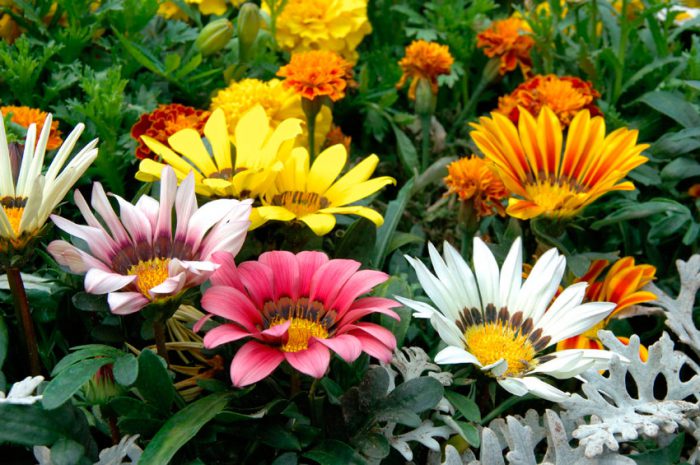
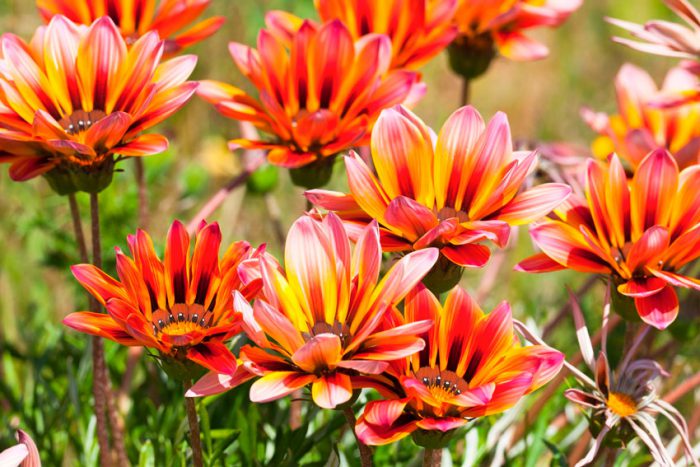


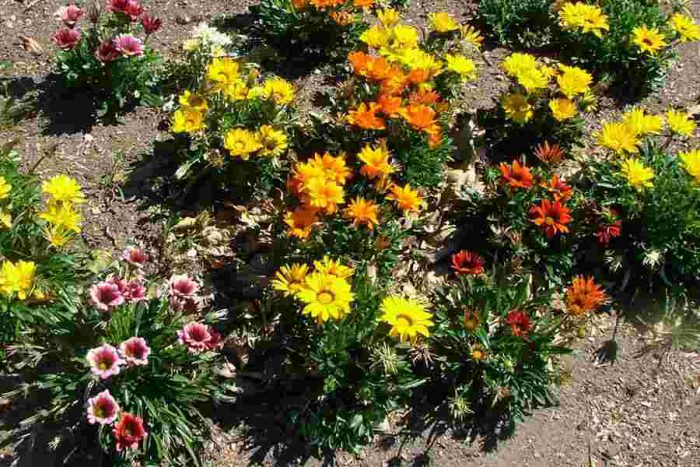
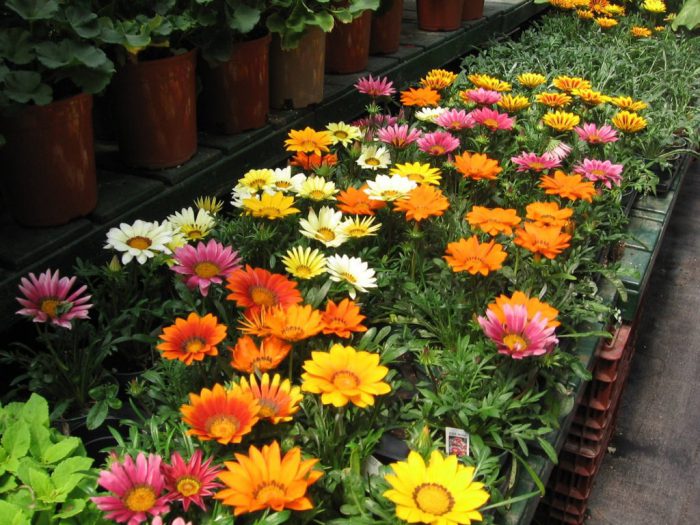
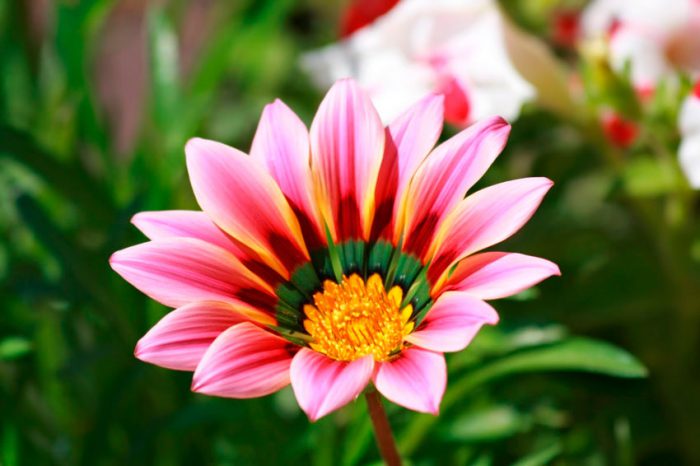

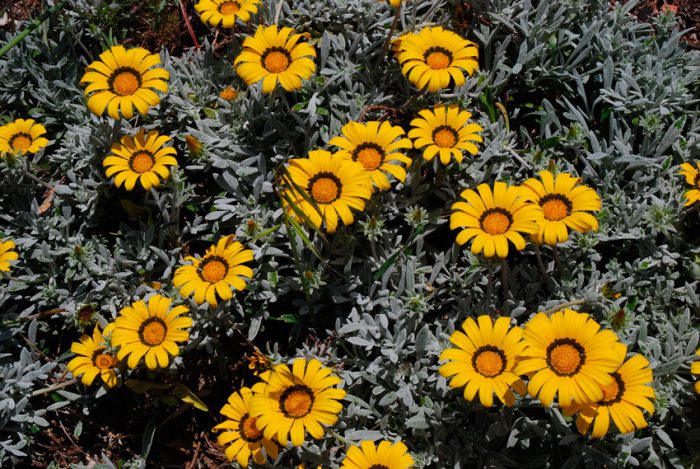
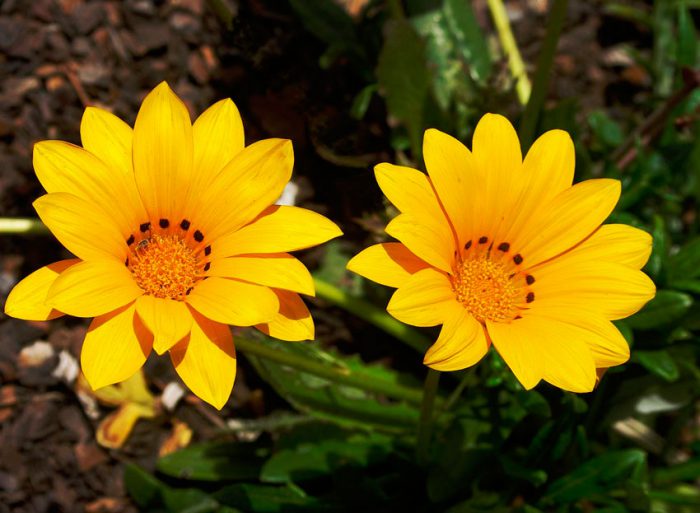
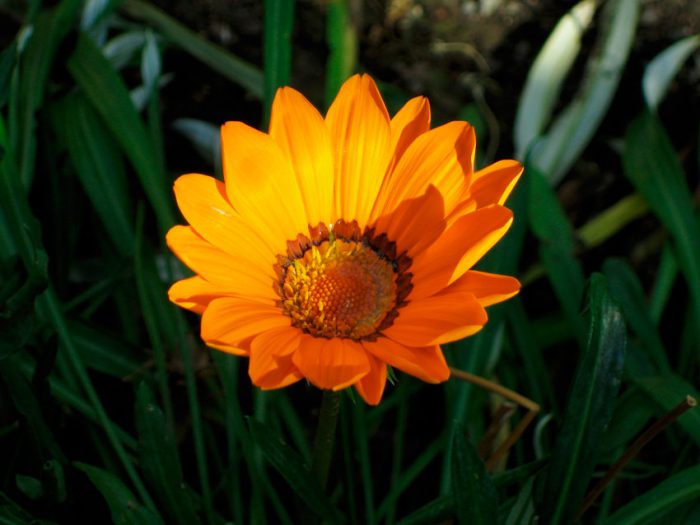



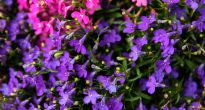
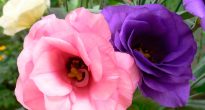





Wow how much information about this color. I also saw this flower, it is a very beautiful flower. This is such a daisy that you want to plant it over and over again and you want to get more and more varieties. It is perfect for decorating your site.
Gatsania is a beautiful flowering plant, the main thing is that the flower develops well in any garden with sufficient heat and sun. They have various shades with variegated patterns on the petals and are very attractive.
From the outside, not a very noticeable plant, but at the same time what conditions it requires. I was very surprised, if you look at the same peony, then it requires even less attention. If you need to find another place for wintering.